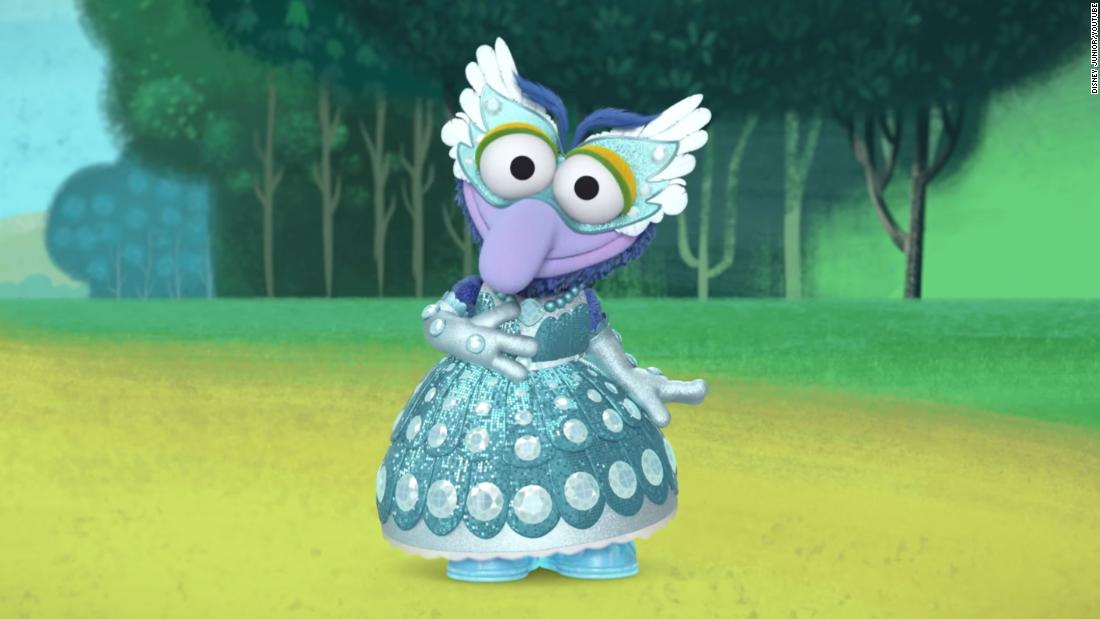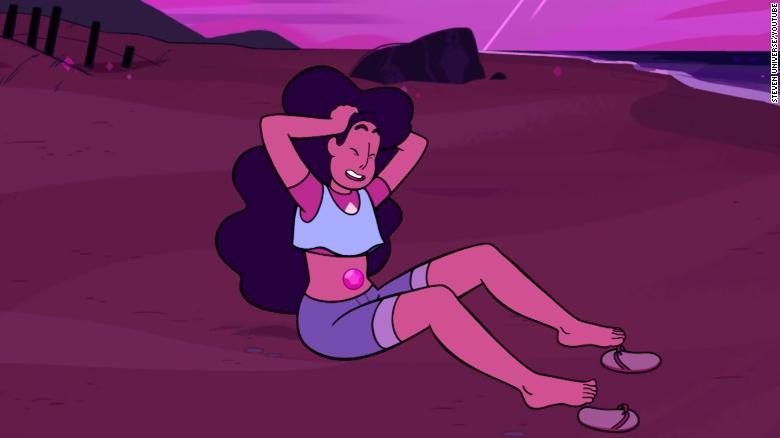Nonbinary characters like ‘Gonzo-rella’ are lighting up children’s TV and encouraging self-acceptance

A new princess giddily square-danced onto the scene earlier this summer. They have blue fur, a hook-shaped nose, and a fondness for poultry. They’re a Muppet, and you’ve undoubtedly seen them before. Gonzo-Rella, Gonzo the Great’s royal alias, is their name. The eccentric Muppet is arguably best known for attempting dangerous antics that go wrong. Gonzo, on the other hand, is the newest gender-diverse character to appear on a children’s television show, and the Disney network no less.
Gonzo-rella first appeared in an episode of the Disney Junior show “Muppet Babies,” in which Gonzo wishes to attend Miss Piggy’s royal ball in a sparkly gown. Gonzo gets to wear the frock of their dreams — in disguise — thanks to a flick of one Fairy Rat-wand, father’s much to the pleasure of the Muppet Babies. The mysterious princess bravely reveals herself to be Gonzo, whom the rest of the Muppets imagined would dress as a knight like Kermit and Fozzie Bear at the end of the story.
“I don’t want you to be upset with me, but I also don’t want to do things because that’s how they’ve always been done,” Gonzo confides in their buddies. “I’d like to be myself.”
One of the most recent and most recognized examples of animated children’s television discussing nonbinary and gender-diverse identification is the “Muppet Babies'” “Gonzo-rella” episode. “Blue’s Clues & You” shared an animated Pride Parade earlier this year that featured a nonbinary dolphin in a wheelchair. “She-Ra and the Princesses of Power,” as well as the groundbreaking “Steven Universe,” have romance stories for nonbinary and LGBTQ characters, as well as positive depictions of self-discovery and acceptance.
Even if the characters are puppets or whimsical gem-people who live in a pastel wonderland, seeing themselves reflected onscreen can be hugely significant for children whose gender expression may not subscribe to preconceived notions of what a boy or girl should look or act like, said Lindsay Toman, an assistant professor of LGBTQ studies at Colgate University.
A compelling story is not built solely on representation. In the aforementioned series, characters rarely use the terms “nonbinary” or “gender-diverse.” Characters whose identities don’t fit neatly within the gender binary are celebrated by their show’s friends and acknowledged by their series’ creators in mainly positive storylines on each of these shows.
“Everyone benefits from having their identities confirmed,” Toman explained. “What’s crucial is that all younger children see good images so that they may learn more about themselves and other people.”
‘Muppet Babies’ and ‘Steven Universe’ both have positive nonbinary tales.
When “Gonzo-rella” premiered this summer, it seemed to confirm what many Muppets fans already knew about Gonzo: that the chicken-loving Muppet is nonbinary. However, it introduced a protagonist that defies labels and gender conventions to very young viewers — “Muppet Babies” is aimed at children aged 4 and up, according to Common Sense Media.
Gonzo is devastated, dresses up, and has the time of their lives at a ball in under 15 minutes. And, while the Muppet moppets are initially astonished to realize that Gonzo is their enigmatic princess, they enthusiastically support her, tossing down the “royal guidebook” that originally required male-presenting Muppets to attend a ball dressed in knight costumes.
Gonzo does not come out as nonbinary in this episode. But Gonzo’s desire to wear a lovely gown is genuine, as is their concern that their friends would reject them. Miss Piggy even refers to “Gonzo-rella” using the pronouns “they” and “them.” With a few outspoken outliers, the critical reception to the episode was overwhelmingly positive.
“Gonzo-rella” is just one episode in a long line of children’s television shows that tackle difficult themes in simple language for young viewers. Through puppets, “Sesame Street” has educated children about death, prejudice, and addiction. Following a succession of high-profile shootings, everyone’s favorite neighbor on “Mister Rogers’ Neighborhood” discussed gun violence. While meeting children where they are, children’s shows can tackle themes that adults may not know how to discuss.

In this scene from “Steven Universe,” a cast of nonbinary characters meets.
Rebecca Sugar, the creator of Cartoon Network’s lovely, introspective sitcom “Steven Universe” and its sequel, believed that young viewers would understand her characters even if they were not labeled. Characters who are nonbinary, LGBTQ, or otherwise defy the gender binary through their gender expression abound in the cast.
In an email to CNN, Sugar said, “We knew kids would get it.” “Good storytelling and entertaining cartoon characters are favorites among children. Adults found it difficult to believe that LGBTQIA+ stories and characters could be both excellent and entertaining, but children were unconcerned. They were engrossed in the show!”
In the 2013 film “Steven Universe,” a half-human boy and his family of feminine Crystal Gems star. While the series is full of hilarity and mayhem, its heart resides in the exploration of its characters’ identities and how they change.
Take, for example, an early episode in which Steven and his friend/love interest Connie “fuse,” meaning they physically and mentally connect to form one towering, model-like entity that enchants both men and women. Even though the two later restart their lives as distinct persons, becoming “Stevonnie” spurs both Steven and Connie to reach confidence they never knew they had.

One of the gender-diverse, LGBTQ, or nonbinary characters on the children’s cartoon is “Stevonnie,” a fusion of the “Steven Universe” characters Steven and Connie.
In a helpful dialogue with Stevonnie, Garnet, a Crystal Gem who is a fusion of two Gems, states, “You are not two persons, and you are not one person.” “You are an adventure! Make certain you have a positive experience.”
After a long relationship, the two halves of Garnet, the Gems Ruby, and Sapphire, become engaged in another cherished episode (Crystal Gems are all nonbinary women, as Sugar has said in previous interviews). In “Steven Universe Future,” an episode from the epilogue series, the nonbinary character Shep, voiced by performer Indya Moore, who is transgender and nonbinary, is introduced as a new partner for Steven’s pal Sadie.
“Steven Universe” avoids subtle clues or winks about a character’s identity or sexuality, as well as crass humor intended for children. The show’s characters aren’t usually described as nonbinary, queer, or trans. Sugar, who uses both the “she” and “them” pronouns, explained that they are simply who they are.
Sugar and many of their close friends and family members have “fluid gender and sexual identities,” according to them. They yearned for clearly LGBT characters in cartoons, which could have helped them when they were younger and alienated by gendered children’s entertainment.
“I just wanted something for us, by us, and about us,” they said.
Because animated series’ worlds are often more fanciful than our own, they have a little more leeway in telling storylines regarding gender identity and expression. There are fewer constraints — of course, a magical rat can turn a Muppet into a princess — and the appearances of characters aren’t constrained by reality.
Sugar wanted to “scramble all the gender clichés” in “Steven Universe,” from narrative aspects to color choices. According to Sugar, the abstract nature of animation allows viewers to “put oneself into the figure.”
They exclaimed, “Their humanity is our humanity!” “Loving a cartoon character is, in a sense, loving the part of yourself that that character represents.”
These TV shows allow children to perceive themselves in them.
Positive gender diversity tales benefit both gender-diverse and nonbinary and cisgender young people, according to Laura Edwards-Leeper, a child clinical psychologist who works with gender-diverse children and teens.
“What children see represented in the media teaches them a lot, and they look for characters with whom they can identify,” she said.
When children identify a television character with whom they identify, they “internalize characteristics of how that figure is seen and handled by others,” according to Edwards-Leeper. And, if the treatment is favorable, it can rub off on the young audience, boosting their self-esteem and validating their unique manner of expressing gender.
However, she believes that the most significant impact makes on parents rather than children.
“These representations can help cisgender parents and other adults understand that rejecting the gender binary and recognizing gender diversity in children is more important for their psychological health and quality of life,” said Edwards-Leeper.

Garnet is a nonbinary lady who appears in “Steven Universe.”
Giving youngsters an example of what a gender-diverse figure looks like — especially when that character embraces and is loved — might help them express themselves more fully, according to Edwards-Leeper.
“Many gender-diverse teenagers say they didn’t know about gender-diverse identities or have the language to express how they felt until they saw it depicted in the media,” she said.
Even Sugar admitted that inventing “Steven Universe” helped them better understand themselves and gave them a sense of belonging.
“I discovered that I was saying things about my sexuality and gender with the comic that I hadn’t admitted to my friends, family, or even myself,” they explained.
Nonbinary characters are becoming more prevalent in children’s television.
Insider counted at least 259 LGBTQ characters in children’s shows, with 38 of them being nonbinary, over the last ten years (a sizable chunk of that came from “Steven Universe”).
But, according to Toman, who has examined the impact of negative portrayals of LGBTQ characters in children’s media, representation alone doesn’t always move the needle in terms of societal acceptability. Toman discovered that the majority of LGBTQ characters in children’s books were White boys and that most of their stories centered on the harassment they encountered, in a 2014 study.
“I think for a long time, exposure and the appearance of an LGBTQ character looked like such a major step in the right way,” Toman said, “but it is no longer enough”. “We need to reflect on our cultural trends and build platforms for people of all types.”

When they confess that they were dressed as a princess at the Muppet Babies’ ball, Gonzo’s lifelong friends welcome them.
Sugar didn’t add nonbinary characters in their series just to make history or to fill up a database or Wikipedia page. They wanted to represent their own experiences in the world, as well as make any child feel accepted in “Steven Universe,” whether or not they identified as nonbinary or gender-diverse. It’s a message that’s especially relevant this year when at least 33 states have considered legislation aimed at transgender youth.
“I wondered what it would mean to ask a generation of children for empathy and interest, and if it may be a small contribution to making the world a safer place,” Sugar concluded.
People who are moved by good stories carve out a place for themselves within the narrative. Even though the stories include effervescent gems and funny infant Muppets, viewers may gain a deeper understanding of themselves by recognizing themselves in a character or setting.
Leave a Reply
You must be logged in to post a comment.